All Flash Isilon NAS: Scalable Storage for Unstructured Data
 More recently, the potential of IT infrastructure has been held back by dependence on mechanical hard drives. But with the advent of flash memory, companies have the opportunity to increase the speed of data processing and improve the way they are stored.
More recently, the potential of IT infrastructure has been held back by dependence on mechanical hard drives. But with the advent of flash memory, companies have the opportunity to increase the speed of data processing and improve the way they are stored. Flash memory is faster than a hard drive, but the scale of its impact on the data center ecosystem is even wider. Due to its high speed, it reduces the time during which other elements of the ecosystem wait for a response from the repository. This improves the efficiency of applications, servers and data networks.
According to analysts at Enterprise Strategy GroupThe increase in operating efficiency at the same performance reduces the cost of a number of components of the IT ecosystem - server hardware and software licenses, and also reduces the total cost of ownership and maintenance of the data center.
This makes flash memory a bargain, even at a high price. But the price factor is losing its strength: there is a steady tendency in the industry to lower the cost of solid-state drives. Flash memory has become more accessible, and companies have the opportunity to introduce new systems with high-performance data access.

In 2016, flash drives caught up with the price / capacity ratio of 15K enterprise-class HDDs.
The idea of a completely diskless data center has real features. If until recently SSDs were assigned the role of a tool for high-performance transactional workloads, today the cheapening of flash memory has expanded its scope to a wide range of tasks.
Respondents to the ESG study on storage trends predict storage growth in the next 24 months with business intelligence and big data analytics.
Today, the topic of using flash drives in data centers is No. 1 in the industry. First, experts note a trend towards the gradual replacement of traditional rotating disks (HDDs) with solid-state drives (SSDs). This helps companies increase the reliability of storage systems and reduce costs in different areas of their service. After all, the recording density is growing rapidly: the latest flash memory is eight times higher than recently released drives. Second, explosive data growth every two years doubles storage requirements, and 80% of this new data is unstructured.
The value of productivity in working with unstructured data
Processing unstructured information using business intelligence or big data analytics in real time requires performance level technology AFA (all-flash array) - arrays entirely built on flash memory. Such storage systems are designed specifically for the needs of unstructured data.
Today, there is a demand for access to unstructured content with low latency in the media, entertainment industry, design automation (EDA), research, etc.
The latest ESG survey of IT managers responsible for data security in companies showed that 49% of respondents already use solid-state technology, another 20% expect the deployment of flash systems in the next 12 months. Most of the respondents confirmed that as a result of using flash memory systems, companies received an effective IT ecosystem and reduced operating costs. Other benefits of SSDs, according to the survey, are increased resource efficiency, reduced operating costs and lower cost of ownership.

Flash storage systems improve application performance and resource utilization. They reduce energy consumption, reduce operating and equipment costs, improve SLA parameters and reduce TCO. Source: ESG survey.
An ESG survey found that 44% of companies improved their total cost of ownership, and buying flash drives was a smart buy. By lowering the price of SSDs, modern technology has become more affordable for a wide range of workloads and data types, including unstructured ones.
Deploying systems on a flash memory, introducing large capacities for structured or block data requires high costs, unbearable for many companies. Therefore, flash arrays for unstructured data must be scalable from the very beginning. This will make the initial investment acceptable, especially given the gradual decline in the cost of flash components.
But hardware is only part of the solution. Large companies will require the functionality of an enterprise-level file system to work efficiently: support for multiple protocols, automatic migration of data to storage levels (tearing), and horizontally scalable architecture.
Flash technology is a good start for digital transformation
For fast work with unstructured data and file content, Dell EMC developed All Flash Isilon , a state-of-the-art, low-cost, enterprise-class, high-density network storage system with scale-out file storage capabilities.
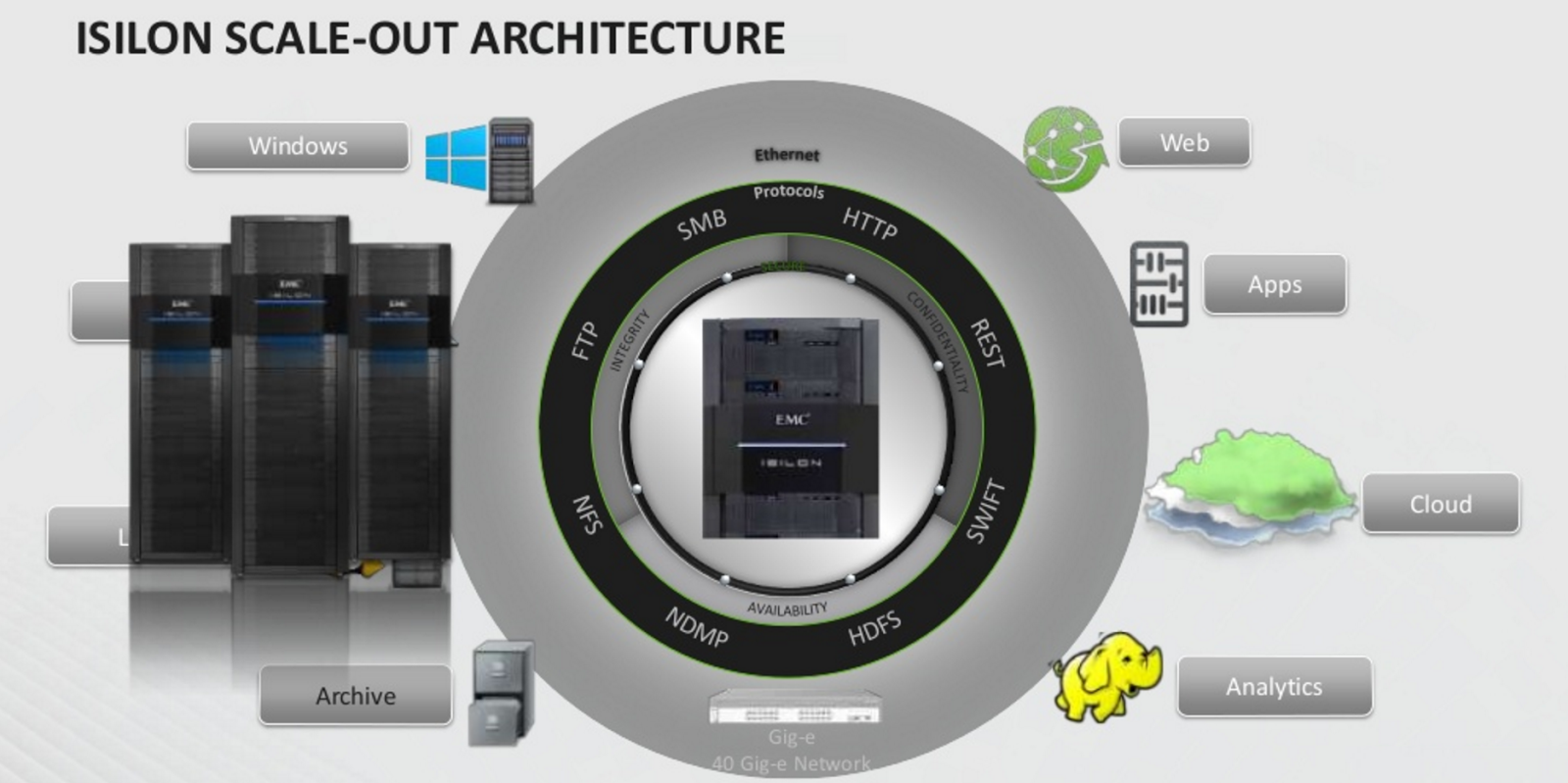
The storage system All Flash Isilon uses the capabilities of cheaper flash drives. The system architecture focuses on enterprise-class functionality and file system scaling. This provides high-performance access to large amounts of data.
Dell EMC is the market leader in flash storage and Isilon is the leading scalable NAS. The new Dell EMC All Flash Isilon highly scalable storage solution combines the price / performance benefits of flash with the performance, flexibility and resiliency of Isilon OneFS. The Isilon All-Flash system will be available for order in 2017.
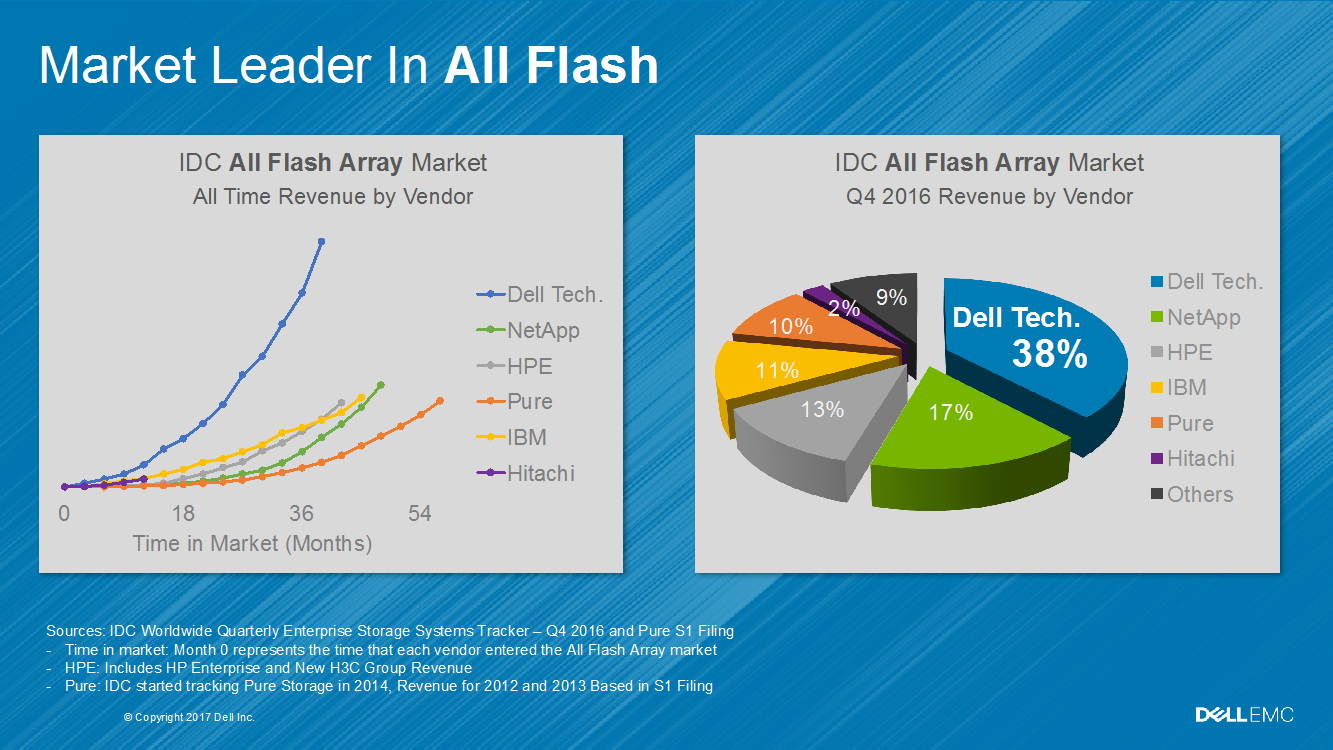
Dell EMC is a leader in the global flash market. Source: IDC.
The Isilon OneFS operating system has become the eighth generation of software and has more than 7 thousand installations. Its scope is analytics, file collaboration, backup and archiving. Due to its modular architecture, Isilon dynamically scales from 16 to 68 Pbytes by adding cluster nodes.
Isilon All-Flash Scale-Out NAS with Isilon OneFS
The Isilon All-Flash Scale-Out NAS storage system aims to use flash memory for all critical unstructured data and workloads. Flash array allows you to achieve extreme performance. Unfortunately, most of these solutions are focused on supporting block access applications, but block data today makes up only 20% of the data volume of most companies.
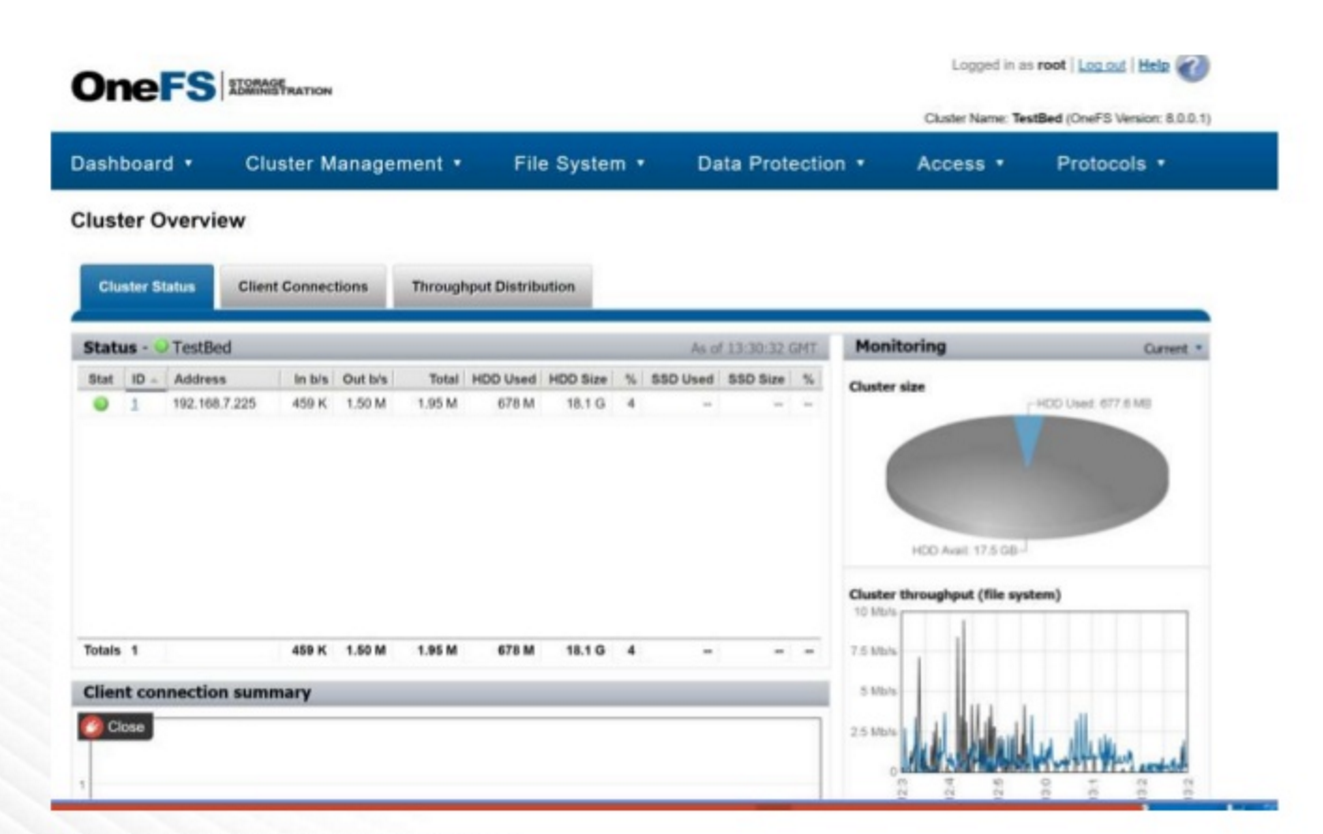
The Dell EMC All Flash Isilon enterprise-class high-performance, scalable storage system is powered by a combination of high-density diskless chassis and the robust and flexible Isilon OneFS operating system.
A number of manufacturers have already brought to the market NAS flash arrays. But these early versions of the products lack enterprise-class features, data protection, security, and effective management capabilities. This distinguishes the EMC All Flash Isilon solution from its analogues - in it all these important points are taken into account and implemented.
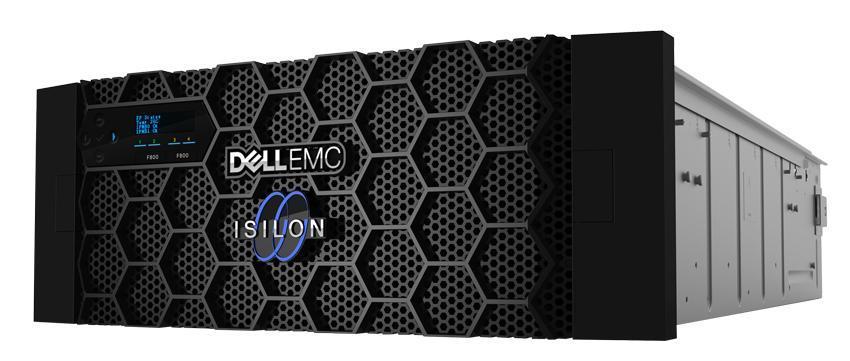
Dell EMC All Flash Isilon will make the transition to diskless data centers real.
The strength and uniqueness of All Flash Isilon is not in the hardware, but in the software. The solution is based on the Isilon OneFS operating system, which is used on other Isilon platforms and used by thousands of companies around the world. The eighth-generation Isilon OneFS, with its endless enterprise-class capabilities, is considered the world's first scalable NAS storage platform.
All Flash Isilon combines high-performance flash memory with scalability and other enterprise-level tools:
- Performance: To support the most complex unstructured workloads, All Flash Isilon provides up to 250,000 IOPS (I / O per second) and bandwidth of 15 GB / s per chassis, and total cluster performance of up to 25 M IOPS and 1.5 TB / from.
- Scalability: With All Flash Isilon, you can increase storage capacity from 92 to 924 TB in a single 4U chassis and up to 92.4 PB in a single Isilon cluster.
- Operational flexibility: the solution runs on Isilon OneFS operating system with support for several protocols (including NFS, SMB, FTP, HDFS, REST, SWIFT and HTTP). This makes it possible to support a wide range of applications and types of loads on one platform.
- Enterprise data protection: All Flash Isilon provides unstructured data integrity and high availability with backups up to N + 4, as well as enterprise-level backup and disaster recovery.
- Security: Security options include role-based access control (RBAC), secure access zones, SEC-compliant WORM data protection, file system auditing, and data encryption.
- Efficiency: All Flash Isilon has a low total cost of storage. Storage utilization can exceed 80%, and SmartDedupe deduplication can increase effective capacity by another 30%.
All Flash Isilon is:• 924 TB of flash memory in a 4U chassis; • scalability to more than 92 Pbytes (100 chassis) with a single file system; • multi-protocol support (NFS, SMB, HDFS, SWIFT, FTP, HTTP, NDMP); • SmartPools and CloudPools: automatic data migration by storage tier, including the cloud; • data management: deduplication, quotas, SmartConnect, InsightIQ ; • data protection: from N + 1 to N + 4 ECC, mirroring, snapshots, replication; • Security: WORM, audit, encryption, access zones, role authentication. |
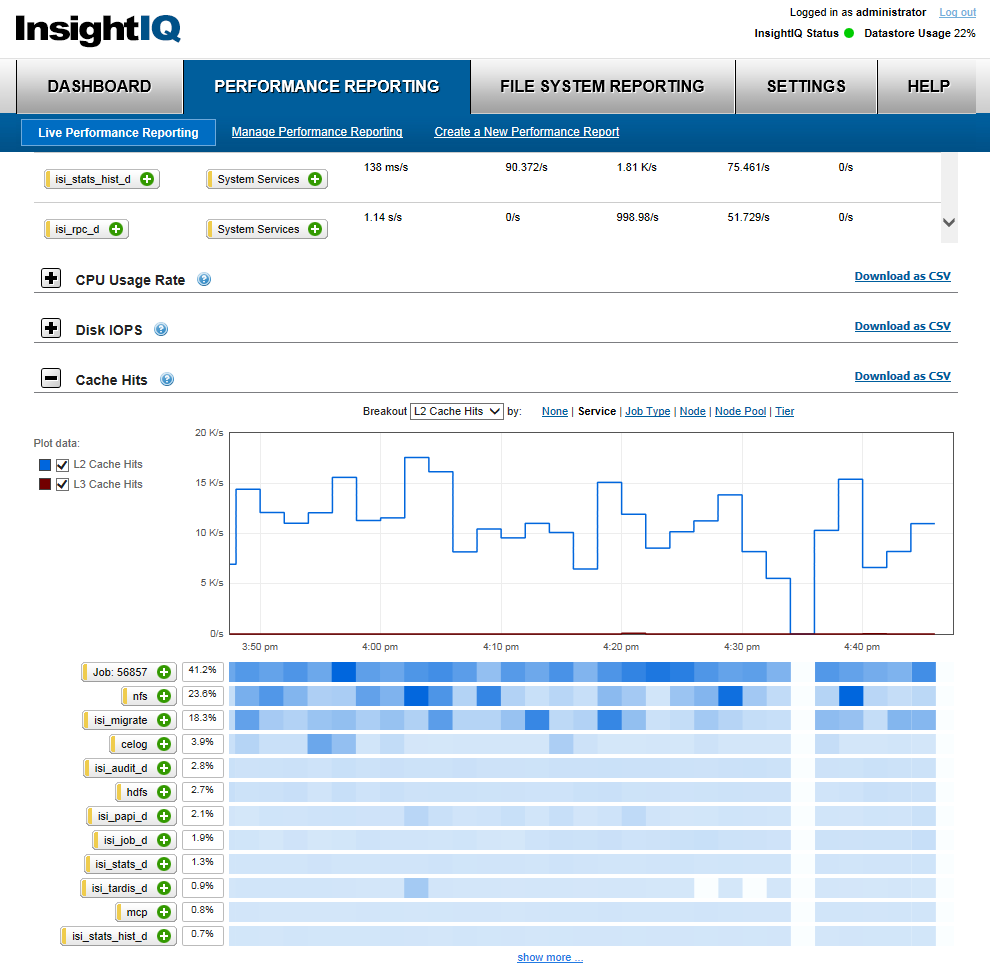
Using InsightIQ software, you can see all the changes in the storage environment.
In a single family
The advantage of the Dell EMC All Flash Isilon is that the system is based on the new ultra-dense chassis with flash drives and the scalable Isilon OneFS file system. This is a compatible extension of an entire family of products, not an isolated storage system or another “data island”.

The family of Dell EMC Isilon products (hybrid and flash arrays) with different indicators of capacity and performance allows you to choose the solution for any task.
Solution Advantages:
- Flash with full OneFS functionality: enterprise-grade capabilities are paramount when serving and protecting content. All Flash Isilon implements the same OneFS functions that Isilon disk arrays have - multi-protocol support, encryption and security, automatic migration between storage tiers and the cloud, and a full set of fault tolerance functions.
- Switching to flash memory when necessary: All Flash Isilon with Isilon OneFS operating system can be combined into a storage pool with existing Isilon clusters to create a hybrid solution. The flexibility of deployment allows you to switch to flash drives when there is a need for it, but there is no need to completely replace the existing storage infrastructure. This saves the company from the complex and costly migration of high-capacity file storage.
- High Density with Granular Scalability: All Flash Isilon is characterized by a high density of 924 TB of flash memory in a 4U chassis. The architecture of All Flash Isilon supports scaling of the system with a smaller step - up to 24 TB per node: this way the capacity grows gradually, which reduces one-time investments.
The advantage of All Flash Isilon is the option to automatically copy data to cost-effective storage resources. Using Isilon SmartPools and CloudPools software, the solution uses automated tiered storage. This makes it possible to easily migrate data to cheaper tiers, including cloud storage, as soon as they become less valuable. For companies, this saves on capital costs and optimizes storage resources. The option to automatically copy data frees up storage space for All Flash Isilon for the most demanding applications.
Isilon can be expanded at any time with data services and third-party software vendor (ISV) products. This will expand its capabilities and increase the scope from active archiving to big data analytics and storage of video surveillance system recordings.
For different tasks and needs, different models of the Isilon NAS platform have been developed: for intense transactional loads; economical; with high density or exclusively software. But they all meet the specific requirements of different loads for storage performance and capacity.
The latest version of OneFS supports CloudPools for storing data in the cloud, IsilonSD Edge software and system updates without stopping it.
Analyst Assessment
Analysts rank Isilon as the market leader for scalable file systems for several reasons. Experts praised the stability of the product, high data efficiency, ease of management and data mobility, as well as the high satisfaction of the companies that implemented the solution. According to Gartner, Isilon is a mature, scalable NAS platform, ready for use in many business sectors.
The scope of Isilon is expanding, and today the solution is used not only for traditional file systems, but also for video surveillance, big data analytics, backup and active archiving.
Gartner is confident that users working with unstructured data will appreciate the wide range of Dell EMC products, an active pricing policy, and new models for deploying and using storage systems. Among the advantages are the possibility of buying only the software version of the system, leasing, subscription and payment for actually involved resources.
According to experts, the way to transition to an infrastructure with the leading role of flash storage is as important as the end result. For example, high-capacity storage environments with unstructured data require a lot of time and money to migrate. And the complete replacement of the existing infrastructure for the deployment of a new storage environment on flash drives is also a high risk of losing important information during data transfer. But vendors who have already eliminated the problems of high cost and the complexity of complete data migration in current generations of hardware will eliminate these problems in future generations of storage systems, analysts are sure.
Experts predict that in the near future, the capacity will be measured in tens and hundreds of petabytes. In such a situation, the issue of data migration is inevitable. Those companies that do this first will become more effective than competitors and save on operating expenses.
Conclusion
Today, the speed of generating, analyzing and exchanging data has become a key indicator of enterprise competitiveness. To meet the demands of the times, they need fast, high-performance data access. And the tasks of business intelligence are just one example. Experts predict that a quick analysis of genetic information in healthcare can save lives and lower health costs without compromising on the quality of services. In the future, companies in the media and entertainment industry will increase video and photo resolutions to 8K and 16K. In CAD, high-performance access to digital content will accelerate product development. A qualitative breakthrough in processing speed and data storage method was made possible thanks to the technology of flash systems.
